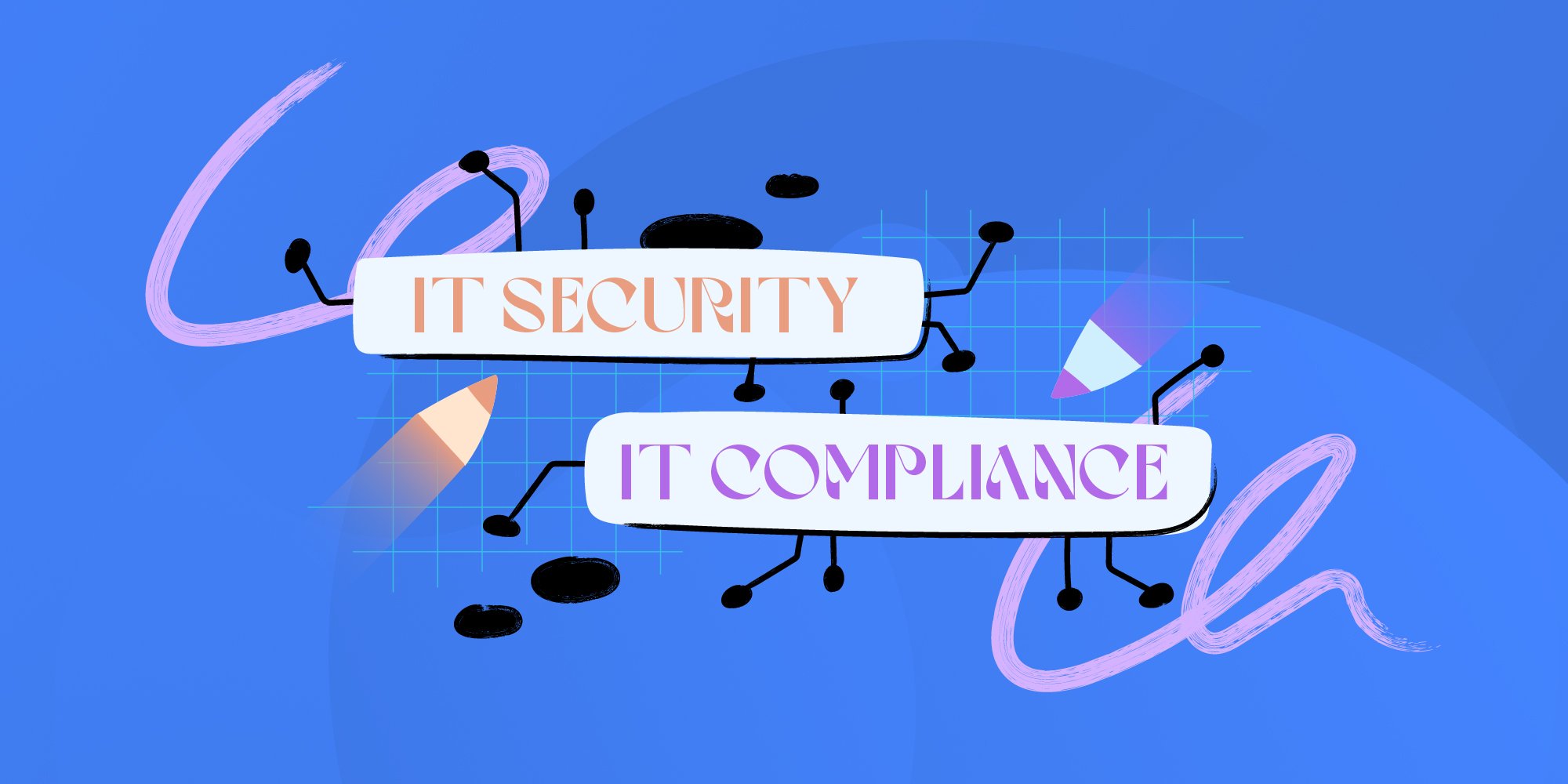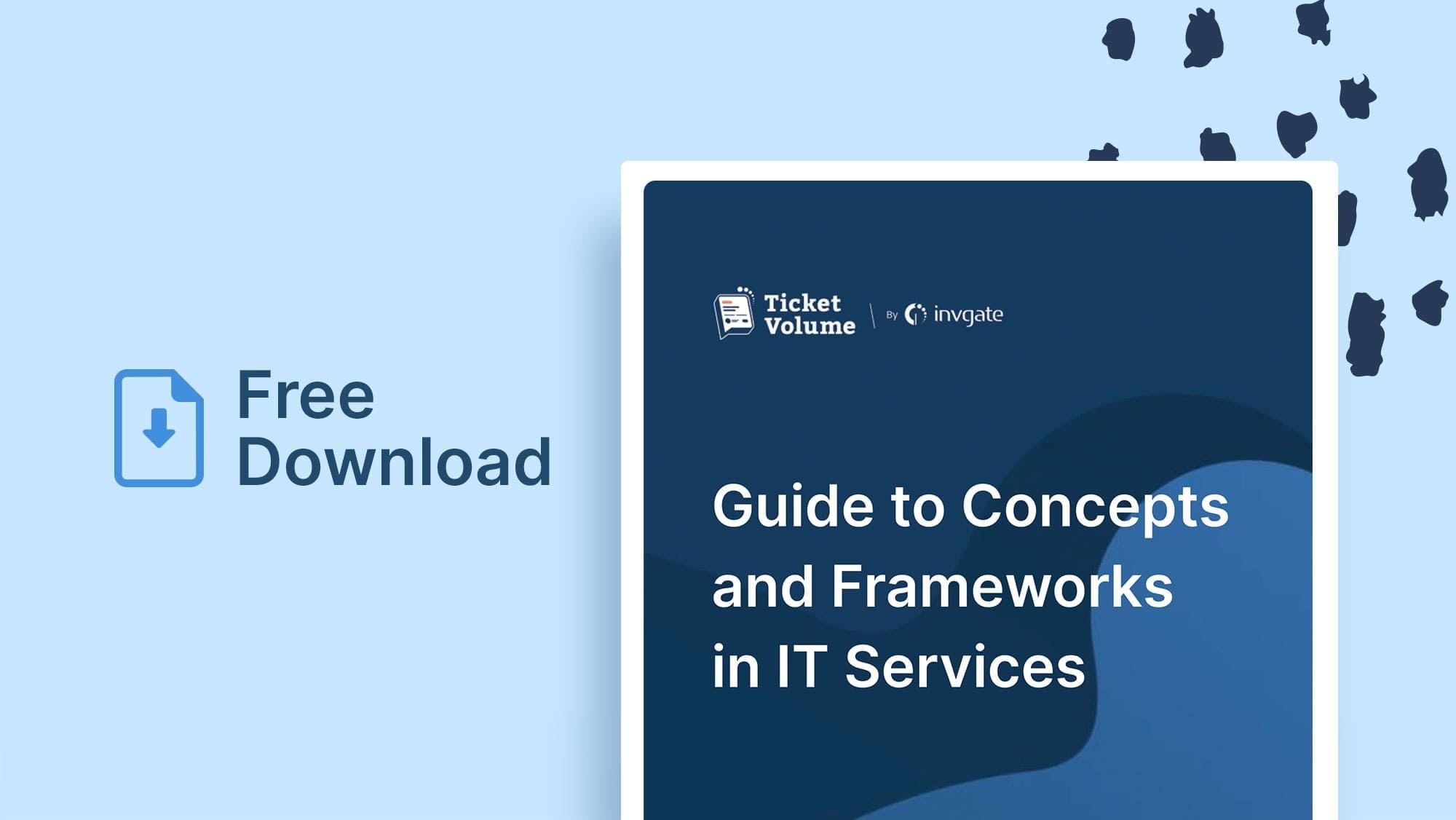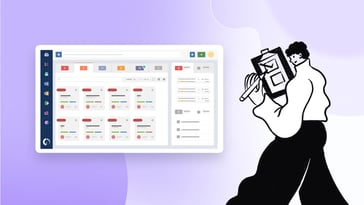IT Risk Management ensures all IT risks are properly spotted and dealt with in an efficient and safe manner. It can protect your environment and its users from internal and external threats and help your organization meet its Governance, Risk, and Compliance (GRC) obligations.
If you’re searching for reliable and proficient ways to keep your workplace protected, you’re in the right place. In this article we will explore the full scope of Risk Management and the benefits that come with it. Finally, to spring into action, we will look through the most commonly used frameworks and how to create a complete and useful Risk Management plan for your organization.
Ready to know more about IT risk management? Let's get started.

What is Risk Management?
In general, Risk Management comprehends an organization's effort to identify, assess, and manage financial, legal, technological, and security-related risks. It includes procedures, policies, working practices, training programs, and tools to identify and assess potential threats and vulnerabilities.
Risk Management in IT
Risk Management and IT Risk Management can be (and often are) used interchangeably. This makes sense if we consider that they both urge us to consistently identify, analyze, evaluate, and treat threats and risks to the organization.
However, they’re not exactly the same. The main goals of IT Risk Management are:
- To manage control and protect your IT environment.
- To maintain the integrity, confidentiality, and availability of IT services.
- To ensure that risks are both identified and managed effectively, efficiently, and safely.
IT and Risk Management must work closely together across organizations to ensure that any information risks are captured and addressed quickly and safely.
IT supports overall Risk Management practices to work successfully through the following:
- Having an acceptable use policy to ensure that all stakeholders understand what is and isn't an acceptable use of company devices and systems.
- Using Change Management or Enablement to ensure that any change activity is reviewed, assessed, and authorized so that everyone is aware of any change-related risk.
- Having a Release Management practice to ensure that only authorized, licensed, secure software is deployed to company devices.
- Performing effective IT Asset Management (ITAM) to ensure that IT assets are tracked, managed, and controlled throughout their lifecycle.
- Following IT support best practices, such as locking down corporate devices to ensure changes. New software can only be introduced by an authorized IT team member.

Enterprise Risk Management
Enterprise Risk Management is a holistic and integrated approach to identifying, assessing, prioritizing, and mitigating risks across your whole organization. It will create and manage processes and procedures to identify potential threats, understand their impact, and develop a management plan. IT Risk Management is an essential piece of the overall Enterprise Risk Management program.
Why is Risk Management important?
Risk Management is a systematic approach to keeping your organization, its data, and its people safe. By implementing its complete set of practices and procedures, you can make sure that no threats are overlooked or missed.
For the IT department, this guarantees external compliance and preparation for potential audits, as well as preventative measures to be prepared for cyber threats. It also means that you can operate without unexpected interruptions, which can be costly and frustrating for your teams. In essence, Risk Management keeps everything protected and working smoothly as it should.
Risk Assessment vs. Risk Management
So, Risk Assessment and Risk Management are essentially the same thing, right? Wrong! But you do need both to be able to deal with risks appropriately.
First, you will use Risk Assessment to understand the potential threat and its significance and impact. It is all about understanding possible risks in all their detail and thoroughly identifying, analyzing, and evaluating them. The purpose of Risk Assessment is to help to design the Risk Management strategy.
So, Risk Management is the next step. It takes the output from the previous stage and prioritizes the list of threats and risks before taking the appropriate actions to mitigate, monitor, and control them.
Compliance vs. Risk Management
Again, they’re not exactly the same. But this one is a bit easier to explain. IT compliance means meeting a third party's requirements to meet your organization's regulatory, legal, or customer obligations. Risk Management is broader, but it acts as a key enabler. By ensuring that risks are handled effectively and safely, it addresses compliance needs.

Vulnerability Management vs. Risk Management
Vulnerability Management focuses on managing IT vulnerabilities. Via the Patch Management process it verifies that security patches are deployed quickly and effectively to improve functionality or remove vulnerabilities from an IT system or service.
Risk Management supports this process by highlighting the potential software vulnerabilities to ensure the correct practices can act on them in a timely manner.
Asset Management vs. Risk Management
IT Asset Management ensures all IT assets are managed, controlled, and protected throughout their lifecycle.
Risk Management is deeply related to this practice by highlighting any potential Asset Management risks, such as fines or penalties associated with expired licenses, outdated software that can pose a security risk, and unauthorized assets lurking in your IT perimeter.
5 Benefits of IT Risk Management
The benefits of implementing a Risk Management strategy include:
- Having a structured framework to ensure risk is being managed effectively and consistently across your organization.
- Counting on a dedicated area for identifying and logging risks that ensures nothing is lost, ignored, or forgotten about
- Ensuring substantial alignment with your overall GRC obligations.
- Gaining more control over your IT estate, leading to a more proactive model.
- Having increased confidence from customers and stakeholders. IT Risk Management practices make the statement that you care about IT security, as well as the technology, your information, and your people. It will differentiate you in a crowded market, giving potential customers the confidence that you will look after them and their data.
Risk Management frameworks
When looking at Risk Management frameworks, you have options. They each define specific guidelines oriented to different areas of the practice. A combined approach to frameworks is the way to make sure you are working towards your organization’s specific needs.
Some of the most commonly used frameworks include NIST, ISO 27001, COBIT, COSO, and ITIL. Let’s take a closer look at each of these.
NIST
The National Institute of Standards and Technology (NIST) owns the NIST cyber security framework. This consists of a set of voluntary guidelines for organizations to manage cybersecurity threats, risks, and vulnerabilities and provides a risk-based approach for organizations to identify, assess, and mitigate cyber-attacks.
ISO 27001
ISO 27001 is the international standard for Information Security Management. Using a Risk Management approach, it provides a framework for managing, controlling, and protecting privileged and sensitive information. The standard sets out the requirements for establishing, implementing, maintaining, and continuously improving an organization's Information Security Management Ssystem (ISMS).
COBIT
Control Objectives for Information and Related Technology (COBIT) is a framework that looks after IT governance. It maps onto the ITIL best practice framework (as well as other methodologies and frameworks) and is used by organizations to manage their IT risk, data security, and compliance obligations.
COSO Risk Management
COSO defines Enterprise Risk Management (ERM) as "the culture, capabilities, and practices, integrated with strategy-setting and its performance, that organizations rely on to manage risk in creating, preserving, and realizing value." This guidance helps organizations understand how to incorporate Risk Assessment, objective setting, corporate governance, risk tolerance, risk appetite, and risk response into business strategies.
ITIL
ITIL is the most popular framework for IT Service Management (ITSM). It has a specific practice for Risk Management in the General Management Practice within the Service Value System. It looks to ensure that organizations understand and effectively handle risks and provides practical guidance on how to effectively identify, assess, and treat them.
While traditional risk management frameworks provide essential foundations for IT security and compliance, organizations deploying artificial intelligence and machine learning technologies often require a systematic solution that addresses unique AI-specific risks including algorithmic bias, model drift, data governance, and regulatory compliance across the AI lifecycle

IT Risk Management plan
As with practically everything in IT practices, a vital aspect of any Risk Management is to have a plan. It should document your IT Risk Management process, including identification, evaluation, and risk mitigation activities.
Specifically, your IT Risk Management plan should contain the following:
- Scope
- Definition of a risk that is relevant to your business
- Risk Management activities include identifying risks, assessing and prioritizing risks, mitigating, managing, or preventing risks, and auditing work practices
- The provision of Risk Management software to automate routine tasks.

Risk Management best practices
Apart from studying and implementing the specific frameworks, following these best practices will help you up your Risk Management processes and support your planning efforts:
- Monitor your IT environment - How can you manage risk if you don't know about it? Proactively monitoring your IT environment is crucial in ensuring your IT Risk Management process stays on track (you can do it in no time with InvGate Asset Management’s Health Rules and Smart Tags, by the way!).
- Start with your most significant area of exposure - Trying to address everything at once can be overwhelming and might not be strategic. If you know you have an area of concern, start with that. If you know you have a problem, deal with it to move on to the next thing.
- Lean into existing GRC frameworks - Don't reinvent the wheel. If your business has a GRC department, use them! Work with them to define and create your IT Risk Management policies, procedures, and work instructions so they stay aligned with the rest of the business.
In conclusion
IT Risk Management involves addressing all IT threats, but also analyzing and identifying them in advance. This gives you the chance to arrive before they become more serious or significantly disrupt or harm your organization’s work. It can also help you prevent future similar scenarios.
These sets of IT Risk Management practices are a central part of your overall Enterprise Risk Management framework. Both work closely to keep your whole organization up and running safely. Managing all possible risks, especially if your organization is large, can be a complex task. Luckily, frameworks can help provide structure and designing a complete risk plan to be followed can assist you in mapping out your Risk Management activities.
And don't forget that you can count on InvGate Asset Management to automate and streamline IT Risk Management practices. Ask for a 30 day free trial and start right away!
Frequently Asked Questions
What is Risk Management in IT security?
Risk management works with IT security to identify, assess, and manage risks.
Why is it important to have a Risk Management plan?
To ensure a documented, repeatable way of dealing with IT risks.
What is the first step in the Risk Management process?
Identify risks and capture them in a risk log so they can be assessed, prioritized, and managed appropriately.
Where does Risk Management fall in ITIL?
Risk Management is a general management practice within the ITIL 4 framework.
What is a third-party Risk Manager?
A third-party Risk Manager manages any risk activity pertaining to external suppliers.
How to become a Risk Manager?
Start with some research. Look at what areas of risk interest you, look into the relevant frameworks and qualifications, and go from there.
What does a Risk Manager do?
A Risk Manager is responsible for the day-to-day running of the IT Risk Management practice.
Is a Risk Management certification worth it?
Yes, because it will give you something to work towards and be accountable for. Being certified makes your Risk Management practice more effective (and visible) across your organization.















